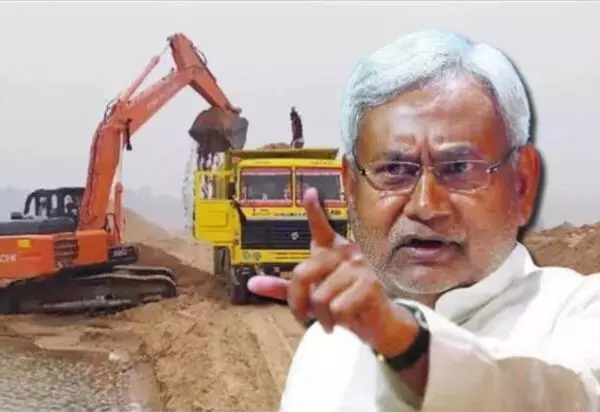Bihar's Bitter Land Disputes: Murders, Mafia, and 100-Year-Old Cases"

This past week, several bizarre land dispute incidents came to light in Bihar. In Bhagalpur, the Murli Hill, a well-known tourist destination and government property, was found to be registered in the name of a private individual, Shamsul Khan. In Begusarai, a local court finally resolved a land dispute after 108 years, while in Bhojpur, another case was decided after 66 years.
Bihar ranks highest in the country in terms of murders resulting from land disputes. According to the National Crime Records Bureau, 815 people were killed in such cases. The data also reveals that Bihar recorded 3,363 incidents of land dispute-related crimes, followed by Maharashtra with 1,259.
Chief Minister Nitish Kumar himself acknowledges that 60% of all crimes registered by the police in Bihar are linked to land disputes.
Across Bihar, thousands of cases are pending in various courts under the Bihar Land Dispute Resolution Act. These include cases at district-level revenue courts, sub-judge courts, divisional commissioner courts, state-level land dispute tribunals, and more than 20,000 cases are under consideration in the High Court.
In Patna’s Kankarbagh colony, during an inspection by the Chairman of the Bihar State Electricity Board, it was revealed that the land on which the board’s office stood was not government-owned, but registered under the name of a local land mafia. When the district administration investigated through the Circle Office, it was discovered that revenue officials and circle officers had sold off the board’s land after taking bribes. Three staffers were later arrested.
In Bhagalpur, the state government directed District Magistrate Naval Kishore Chaudhary to develop the historic Murli Hill, located on the banks of the Ganga in Sultanganj, into a tourist destination. Every year during the month of Shravan, lakhs of pilgrims visit the area, and the hill is a major attraction. When the DM visited the site two days ago, the local revenue officer, Ravi Kumar, informed him that the hill had already been sold to Shamsul Khan back in 2012. On checking the records, the DM discovered that a former revenue officer had granted ownership rights and possession of the hill to Khan. Authorities are now trying to trace the officer who sold a hill protected by the Archaeological Survey of India.
In Bhojpur district’s Ikauna village, Visheshwar Singh had filed a case on April 21, 1947, in the Ara court against a relative over land located on the banks of the Ganga. The lower court delivered its judgment 68 years later. Singh reportedly spent over ₹20 lakhs in legal fees. Even after winning, he lamented, “Who will buy the land now? The river’s course has changed—very little land remains outside the water.”
In Begusarai’s Bariarpur Charia village, a dispute over just nine dhur (about 150 square feet) of land ended up costing nine bighas (roughly six acres), which had to be sold off to fight the case. The court gave its verdict 108 years later. The third generation of the original litigant expressed relief, saying, “It was a matter of pride—even if we lost land, it’s okay.”
In the capital Patna, the land acquisition for government officers’ bungalows began after the formation of Bihar state in 1913. One such case involves bungalow number 32 on Harding Road, now the office of the State Election Commission. The original owner, a farmer, had sought compensation after the land was acquired. The case traveled through the lower courts and finally reached High Court Justice J.N. Singh. After 94 years, judgment was delivered in favor of the farmer’s third generation, who were declared owners of the rear portion of the bungalow compound, now known as G-Back Harding Road. They now live peacefully on 2.5 kathas of land. The compensation awarded, however, is nominal by today's standards, as it was based on 1913 rates.
